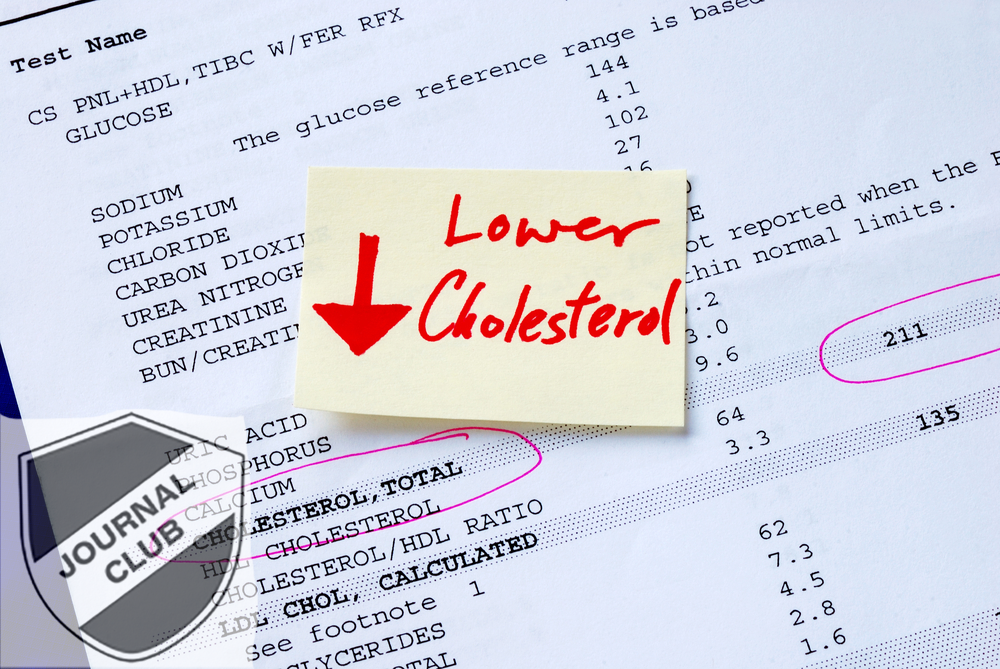Richard’s Reviews: Cholesterol, Surrogate Outcomes and Real World Outcomes
Posted on 2nd September 2014 by Nathan Collicott

I’ve picked out two parts of Richard’s Review for this week which I’ve found especially interesting; Niacin, and Sjögren Syndrome.
Effects of Extended-Release Niacin with Laropiprant in High-Risk Patients
Almost everyone has heard the adage of “good” and “bad” cholesterol. High levels of “bad” cholesterol aka low density lipoprotein, LDL) and low levels of “good” (aka high density lipoprotein, HDL) are associated with cardiovascular disease, such as heart attacks and stroke. Statins provide the current best pharmacological option to lower LDL and elevate HDL and subsequently reduce the risk of cardiovascular disease.
Given the success of statins, you might expect that other agents that further reduce LDL and increase HDL would provide additional cardiovascular protection.
Niacin, a B vitamin, is one such agent that has previously been shown to reduce LDL and increase HDL. Use of niacin in the prevention of cardiovascular disease has been increasing in the USA, while in current NICE guidelines, it is an alternative when statins cannot be taken by the patient, despite limited evidence as to its efficacy in preventing cardiovascular events.
The above study sought to clarify the role of niacin in the secondary prevention of cardiovascular disease (i.e. prevention of further cardiovascular events in patients with a previous history of cardiovascular disease). Initially, 42, 424 patients with previously established cardiovascular disease were recruited. In a pre-randomisation stage, they were then established on a standard statin (simvastatin 40 mg daily) before receiving niacin to establish whether they were able to tolerate this drug. One third were unable to do so and withdrew before randomisation. Following this phase, participants were randomised to receiving niacin or placebo, and followed for several years. A further 25% of niacin group withdrew from the study during the treatment period, compared to only 16% of the placebo group. Like statins, to prevent cardiovascular events, niacin would be taken on an ongoing basis. In this context, using a drug that is not tolerated by such a significant proportion of patients is likely to be challenging, if not untenable, before we even come to look at any efficacy data.
In addition to being poorly tolerated, niacin was also associated with worrying adverse effects, including: an increase in new diagnoses of diabetes; worsening control in pre-existing diabetics, often leading to hospitalisation; increased bleeding events, including gastrointestinal and intracranial bleeding; increased risk of infection; increased risk of myopathy. To compound these findings, niacin did no better than placebo in preventing further vascular events (such as heart attacks and strokes) or mortality, despite its apparently advantageous impact on cholesterol.
Take home message
This study provides a great demonstration of the fact that surrogate outcomes don’t always translate into clinical, real-world outcomes. In this case, we have niacin, which clearly lowers LDL and elevates HDL (the surrogate outcome). However, patients generally and rightly care more about lowering their risk of heart attacks, stroke and death (the real world clinical outcomes) than they do about numbers on a blood test, and here, where it counts most, niacin proves to be of no benefit.
Effects of Hydroxychloroquine on Symptomatic Improvement in Primary Sjögren Syndrome: The JOQUER Randomized Clinical Trial
Sjogren’s syndrome is an autoimmune disease characterised by the infiltration and destruction of the lacrimal and salivary glands, classically causing dry eyes and mouth. Other common clinical features may include fatigue as well as joint and muscle pain.
Dry eyes and mouth are often treated symptomatically with artificial tears and saliva substitutes, or cholinergic drugs that promote production of tears and saliva. Drugs that suppress the immune system, such as hydroxychloroquine, may also be used, especially for fatigue and musculoskeletal pain.
This study involved 120 patients with Sjogren’s syndrome who were randomised to receiving hydroxychloroquine or placebo for 24 weeks. Patients self-reported their symptoms of dryness, fatigue and pain on a scale from 0-10 after 12 and 24 weeks. At the end of 24 weeks, there was no difference between hydroxychloroquine and placebo in terms of the proportion of patients reporting at least a 30% improvement on 2 of 3 scales.
Take home message
In this small study, hydroxychloroquine did not improve symptoms of Sjogren’s syndrome compared with placebo.
If you want to check out the full review, you’ll find it here: http://blogs.bmj.com/bmj/2014/07/21/richard-lehmans-journal-review-21-july-2014/



